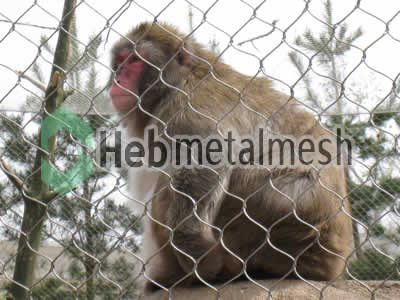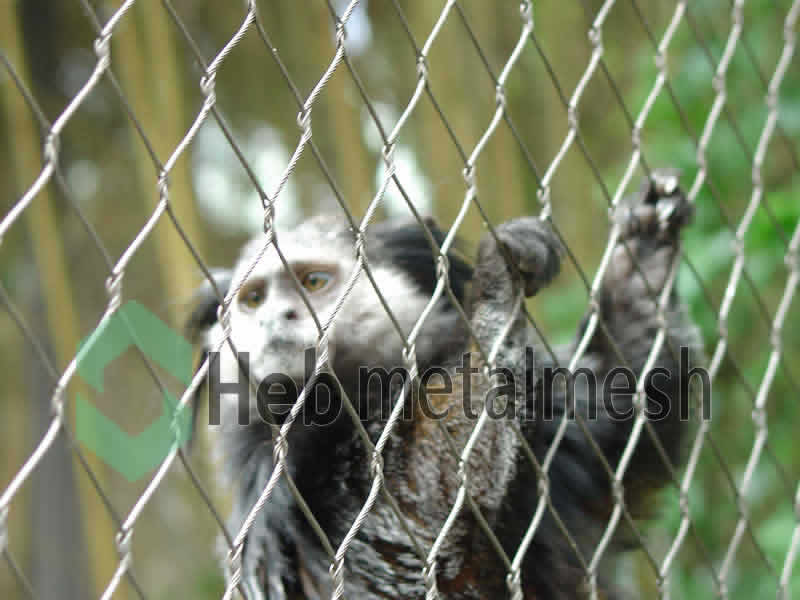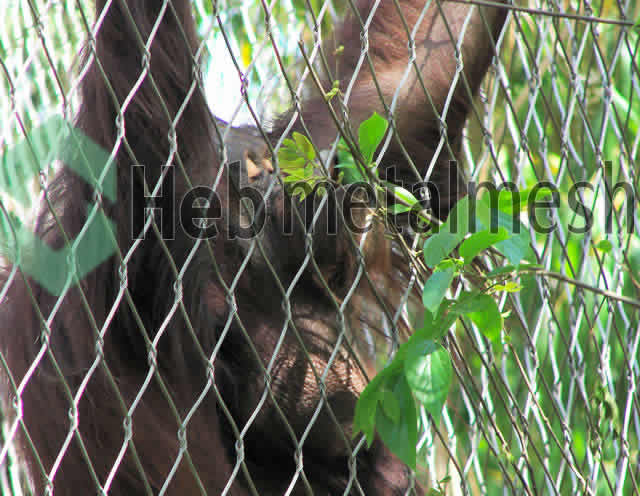Introduction to Monkey Habitats
✅Choose a best specification and size for your need.
✅Contact for your customized panel size and need.
Monkey habitats are integral to the conservation of these fascinating primates and play a crucial role in promoting animal welfare. Understanding the diverse environments in which monkeys thrive is essential for both their survival and well-being. Monkeys are primarily found in tropical forests, exhibiting a strong preference for jungles where they can navigate the complex canopy that provides shelter and food. These natural habitats are vital as they allow the monkeys to engage in their natural behaviors, including foraging, socializing, and breeding.
In addition to their existence in the wild, monkeys are often found in controlled environments such as zoos and wildlife sanctuaries. In these settings, it is imperative to replicate their natural habitat as closely as possible to meet their physical and psychological needs. The design and construction of these environments necessitate careful planning to ensure that they effectively mimic the monkeys’ natural surroundings while providing safety and comfort. This includes the installation of appropriate fencing solutions to secure the area without hindering the monkeys’ natural behaviors.
Private homes can also serve as habitats for monkeys, particularly in cases of exotic pet ownership. However, this scenario raises ethical considerations regarding their welfare. In such instances, it becomes essential to create a safe space that allows these primates to thrive while providing them the necessary stimulation and environment that resembles their native habitats. Overall, the importance of well-structured monkey habitats cannot be overstated, as they contribute to the conservation of various species while ensuring their health and happiness in both natural and artificial settings.
The Role of Fencing in Monkey Habitats
Fencing plays an integral role in the construction and maintenance of monkey habitats, serving multiple purposes that are essential for the safety and well-being of both the monkeys and their surrounding environment. The primary function of fencing is to create a secure boundary that protects the monkeys from potential predators while simultaneously preventing them from escaping into areas where they may face danger or hardship.
In addition to safeguarding the monkeys, effective fencing contributes to the safety of humans who may come into contact with these animals. Many monkey species can display unpredictable behavior if threatened, which may lead to dangerous situations for both the monkeys and people. With a robust fencing system in place, the chances of accidental encounters are significantly reduced, promoting a safer environment for staff, visitors, and other wildlife.
Furthermore, the design and construction of the fencing have a direct impact on the quality of life for the monkeys within their habitat. A properly designed monkey habitat encourages natural behaviors by allowing the animals to climb, explore, and engage with their surroundings. This means that fencing must not only be secure but also carefully planned to enhance the environment for the monkeys. Choosing materials such as stainless steel mesh ensures durability and safety while providing visibility and ventilation, which are critical to the well-being of the inhabitants.
Ultimately, the role of fencing extends beyond mere containment; it is essential for creating a safe, welcoming atmosphere for the monkeys. By utilizing appropriate materials and designs, we can ensure that monkey habitats remain secure and conducive to the animals’ health and happiness. This holistic approach is crucial for fostering healthy ecosystems in which both monkeys and humans can coexist harmoniously.
Why Choose Stainless Steel Mesh for Fencing
When it comes to creating a secure and sustainable monkey habitat, one of the most critical decisions is the selection of appropriate fencing materials. Stainless steel mesh emerges as a premier choice due to its exceptional durability and performance. This material is engineered to withstand the rigors of diverse environmental conditions, which is vital for any outdoor enclosure intended for monkey habitats.
The inherent properties of stainless steel make it remarkably resistant to rust and corrosion, characteristics that are particularly advantageous in settings exposed to moisture, precipitation, and varying temperatures. Unlike traditional fencing materials such as wood or untreated metal, stainless steel mesh does not deteriorate when exposed to harsh weather. This longevity minimizes maintenance costs over time, ensuring that the integrity of the monkey habitat remains intact without frequent replacements or repairs.
Another significant advantage of stainless steel mesh is its strength. It can resist harsh physical impacts, which is essential considering the active nature of monkeys. In a habitat setting, monkeys may climb, jump, and interact with their environment vigorously. A robust fencing solution is necessary to prevent any accidental breaches that could endanger both the animals and the visitors to their habitats. Stainless steel mesh provides this necessary level of safety while allowing for visibility and airflow, enhancing the overall quality of life for the monkeys.
Additionally, the aesthetic appeal of stainless steel mesh should not be overlooked. This material offers a sleek and modern look, contributing to the overall design of the monkey habitat. It can blend seamlessly into natural environments while providing ample security. Given its advantages in durability, maintenance, and visual appeal, stainless steel mesh is undoubtedly a superior fencing option for ensuring the safety and longevity of monkey habitats.
Types of Stainless Steel Mesh for Habitat Fencing
When selecting stainless steel mesh for monkey habitats, it is essential to understand the various types available on the market. Each type is specifically designed to meet different needs based on the environment and the species being housed. The most common types include welded wire mesh, woven wire mesh, and expanded metal mesh.
Welded wire mesh is particularly popular for constructing monkey habitats due to its strength and durability. This type consists of wires that are welded together at each intersection, creating a robust barrier. It is available in various mesh sizes, typically ranging from 1 inch to 4 inches. The tightness of the mesh can be adjusted depending on the species, ensuring that smaller monkeys cannot escape while also allowing for ventilation and visibility within the habitat.
Woven wire mesh, on the other hand, features strands that are interlaced rather than welded. This construction method offers flexibility, making it suitable for curved or irregular fencing shapes. Woven wire is often used in zoos or sanctuaries where the habitat’s layout might require custom shapes. Similar to welded options, woven wire comes in various mesh sizes tailored to the needs of different monkey species and their interaction dynamics.
Expanded metal mesh is another viable option, known for its unique diamond pattern. This type not only provides security but also serves as a visual barrier, which can help to reduce stress among the monkeys by limiting their view of external disturbances. Expanded metal mesh is often used in zoos and larger sanctuaries, where the size of the habitat and the types of monkeys being housed necessitate a more durable solution.
Ultimately, each type of stainless steel mesh serves distinct applications. By understanding these differences, those responsible for monkey habitats can choose the most appropriate fencing solution, ensuring the safety and durability of the environment for these primates.
Benefits of Our Stainless Steel Mesh Products
Stainless steel mesh products provide a robust solution for constructing and maintaining monkey habitats. One of the standout features of our products is their ease of installation. Designed for flexibility, our stainless steel mesh can be easily adapted to fit various enclosure shapes and sizes, allowing for quick implementation in both new constructions and renovations. This user-friendly installation process can significantly reduce labor time and costs associated with setting up a monkey habitat.
Maintenance is another critical aspect where our stainless steel mesh excels. Its corrosion-resistant properties ensure longevity, making it an excellent choice for environments that may be exposed to moisture and other harsh conditions. Unlike other materials that may require frequent replacement or extensive upkeep, stainless steel mesh is designed to withstand the test of time, ensuring the integrity of the monkey habitat with minimal effort from caregivers and facility managers.
Security is paramount when creating safe habitats for primates. Our stainless steel mesh products are engineered to offer unparalleled strength, providing a secure enclosure that protects the inhabitants from potential escape or intrusion. The high tensile strength of stainless steel makes it difficult for the monkeys to chew or tear through the material, which is a common vulnerability in non-metal alternatives. This level of security is essential not only for the safety of the monkeys but also for the peace of mind of caretakers and visitors alike.
Furthermore, customization options allow us to cater to varying habitat needs. We offer a range of mesh sizes and configurations, enabling facilities to select the optimal solution based on the specific species they house and their unique habits. This adaptability ensures that you can create an ideal monkey habitat tailored to the requirements of the primates, thereby enhancing their well-being and allowing them to thrive in a secure environment.
How to Choose the Right Mesh for Your Monkey Habitat
Choosing the appropriate mesh for a monkey habitat is crucial for the health and safety of the animals. To begin with, it is essential to consider the size of the habitat. Larger enclosures will require more robust and durable stainless steel mesh to ensure that it can withstand the monkeys’ natural behaviors, including climbing and swinging. A guideline for selecting the right mesh is to understand that thicker stainless steel wire offers added strength and resilience, making it suitable for larger groups of active monkeys.
Next, it is necessary to assess the budget allocated for the construction of the monkey habitat. While stainless steel mesh can be more expensive than other materials, investing in high-quality mesh is advisable due to its longevity and maintenance-free nature. Cheaper options might save costs initially; however, they could lead to more significant expenses if repairs or replacements are necessary sooner than expected. Choosing a reputable supplier who offers warranties or guarantees might also provide peace of mind and assurance of product quality.
Another vital consideration is the species of monkey being housed. Different species have varying needs concerning their living environments; for instance, larger monkeys like spider monkeys may require higher gauge mesh to prevent escape and ensure their security. Additionally, specific installations may call for mesh with varying sized openings, particularly for species with smaller juvenile members. The chosen mesh should promote proper airflow and visibility while ensuring the monkeys cannot escape or injure themselves. A clear understanding of the species’ traits will help in making an informed decision.
Finally, practical installation tips are essential for effective implementation of the chosen stainless steel mesh. Ensure that the mesh is taut and securely fastened to avoid sagging or any chance of injury to the monkeys. Consulting with professionals experienced in constructing monkey habitats can also yield insights and best practices tailored to specific needs.
Installation Tips for Stainless Steel Mesh Fencing
When considering the installation of stainless steel mesh fencing in monkey habitats, it is essential to approach the task methodically to guarantee safety and durability. The first step is to gather the necessary tools and materials, which include stainless steel mesh rolls, posts, concrete for securing the posts, wire cutters, a measuring tape, a level, and a drill. Having the right tools on hand will streamline the installation process and ensure a sturdy structure.
The installation begins with a thorough assessment of the desired area for the monkey habitat. It is crucial to measure the perimeter accurately, marking where each post will be placed. Posts should typically be spaced about 6 to 8 feet apart for optimal sturdiness. After marking, dig holes for the posts that are at least two feet deep to provide stability against the force exerted by the monkeys over time.
Next, position the posts in the holes and pour concrete to secure them in place. Allow the concrete to cure according to the manufacturer’s instructions. Once the posts are set, unroll the stainless steel mesh fencing and attach it to the posts using appropriate fasteners or clips. Ensure the mesh is taut and positioned at the correct height to prevent any unwanted breaches in the monkey habitat.
One potential challenge during installation may arise from uneven terrain; it is vital to use a level to ensure that the fencing is straight and secure. Additionally, it is important to regularly check for any sharp edges or protrusions on the mesh that could pose a risk to the monkeys. By adhering to these guidelines and maintaining attention to detail, one can ensure a safe and durable stainless steel mesh fencing installation, effectively securing a well-designed monkey habitat.
Maintenance and Care for Stainless Steel Mesh Fencing
Proper maintenance and care of stainless steel mesh fencing are crucial for enhancing its longevity and ensuring it remains a secure barrier in monkey habitats. Regular cleaning is the first step in this maintenance routine. Dust, dirt, and organic materials can accumulate on the surface, which may compromise both functionality and appearance over time. It is advisable to use a mild detergent mixed with warm water and a soft brush to gently scrub the mesh. This method should be employed at regular intervals, ideally every few months, to prevent mineral deposits or rust from developing.
In addition to cleaning, conducting regular inspections is vital. During these inspections, look for signs of wear, such as fraying edges or loose sections within the mesh. It’s essential to check for any rust spots, especially in areas where moisture may linger. Early detection of such issues can facilitate prompt repairs, which are much less costly than replacing entire sections of fencing.
If minor repairs are necessary, several techniques can be employed. Small rust spots can be treated with a wire brush to remove the affected areas, followed by application of a high-quality rust-resistant paint to protect the exposed metal. Tightening any loose fastenings or clips used to secure the mesh will help maintain the integrity of the fence. For more extensive damage, it may be prudent to consult a professional, particularly when ensuring safety is a priority in environments housing monkeys.
Furthermore, applying a corrosion inhibitor specific to stainless steel during inspections can enhance durability. In summary, a proactive approach to the maintenance of stainless steel mesh fencing not only extends its lifespan but also contributes to the overall safety and well-being of the inhabitants in monkey habitats.
Conclusion
In the context of creating optimal environments for primates, ensuring safety and durability within monkey habitats is of paramount importance. Throughout this article, we have highlighted the various benefits of utilizing high-quality stainless steel mesh in the construction of these habitats. Stainless steel mesh not only provides a robust barrier against potential threats but also withstands the test of time, making it a superior choice for both indoor and outdoor spaces intended for monkeys.
One of the key advantages of stainless steel mesh is its resistance to corrosion and wear. Unlike traditional materials, stainless steel maintains its structural integrity even in challenging environments, which is vital for the well-being of the animals. This durability ensures that monkey habitats remain secure, preventing escapes and protecting the animals from external dangers. Furthermore, stainless steel mesh enhances the visibility for caretakers, allowing for close monitoring of the monkeys’ behavior and health without intrusive barriers.
It is important for facilities focusing on primate care to prioritize the use of reliable fencing solutions, as a well-designed monkey habitat significantly contributes to the animals’ overall safety and welfare. The implementation of high-quality materials directly correlates with the longevity of the habitat and the welfare of its inhabitants. As you consider options for your fencing needs, we encourage you to explore our offerings. By choosing the right products, you can ensure a safe, durable, and enjoyable environment for monkeys, fostering their health and well-being for years to come.


